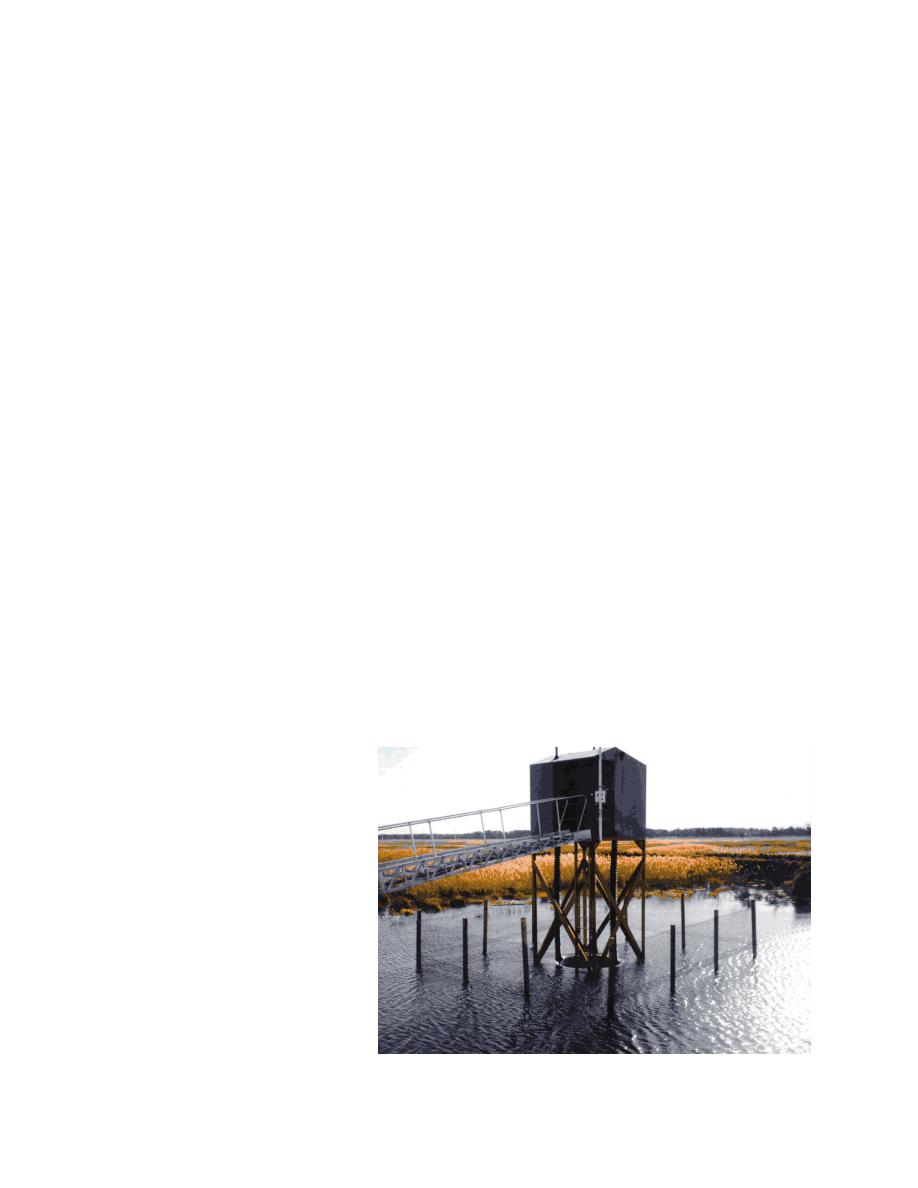 |
||
|
|
||
| |||||||||||||||
|
|
 ERDC TN-DOER-T1
February 2000
head that resembles a side-looking dustpan head dredge. The orientation of the suction head allows
the dredge to remove material in one swing direction only. The VECHT has a rotating cutting basket
that can vary the cut depth very accurately and provide exact cutting depths.
All three dredges were able to meet the criteria of limited turbidity and spillage, and most
importantly, dredge a 20-to 30-cm thickness of contaminated sediments without entraining addi-
tional sediments. The large area of contamination required the accurate dredging capability to ensure
that the Ketelmeer project would not need to be oversized.
In addition to "Innovative Dredging Technologies" (Hopman and McLellan 1999), these authors
compiled 176 fact sheets containing the following types of information about each technology:
technology name, category, description, company or organization, projects completed, information
sources, and literature references. The technologies are presented according to subject or country
of development or availability.
INNOVATION WITHIN THE CORPS: A number of technologies developed within the Corps
are currently undergoing evaluation for potential demonstration under the DOER program. Among
the most promising is the telescoping weir, a Corps invention (patent pending) for water manage-
ment in confined placement sites. From 1986 to 1994, the U.S. Army Engineer Waterways
Experiment Station, Vicksburg, MS, and the U.S. Army Engineer District, Norfolk, conceived,
designed, constructed, and tested a 1/4-scale model of the first telescoping weir for the Norfolk
District (Fowler, Vann, and Woodward 1999). In 1996, the first prototype was constructed and
installed in the middle cell of the Craney Island CDF in Norfolk, VA.
The telescoping weir is an innovative structure designed to closely control the water levels and water
quality during decantation and drainage of carriage water and rainfall runoff from a CDF (Figure 1).
The structure is operated mechanically by lowering and/or raising a cylindrical weir crest to the
desired elevation. The weir consists of a set of vertically nested steel cylinders set on end with one
cylinder within the other. The bottom cylinder is fixed to a foundation that is anchored to the bottom
of the CDF and connected to a dis-
charge pipe (Figure 2). The tele-
scoping weir is set within and at-
tached to a base of a reaction frame
that provides support for it and the
machinery that controls the tele-
scoping movements of the weir.
The weir is raised and lowered by
a set of mechanical screw jacks that
operate simultaneously either
manually or by a solar/battery-
powered motor. The upper cylin-
ders are extended in a telescoping
manner to position the rim of the
top cylinder to any desired eleva-
tion above or below the water sur-
face. As the cylinders are lowered Figure 1. Telescoping weir operating at Craney Island CDF
6
|
|
Privacy Statement - Press Release - Copyright Information. - Contact Us - Support Integrated Publishing |